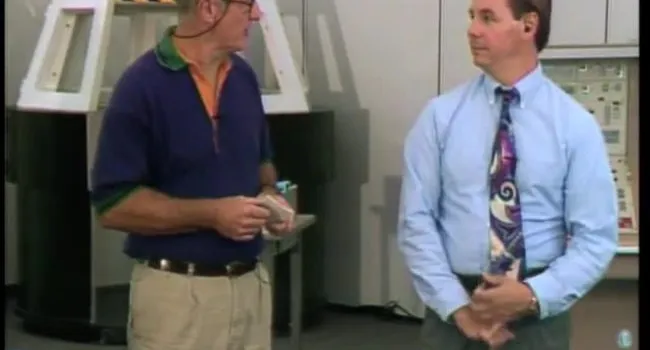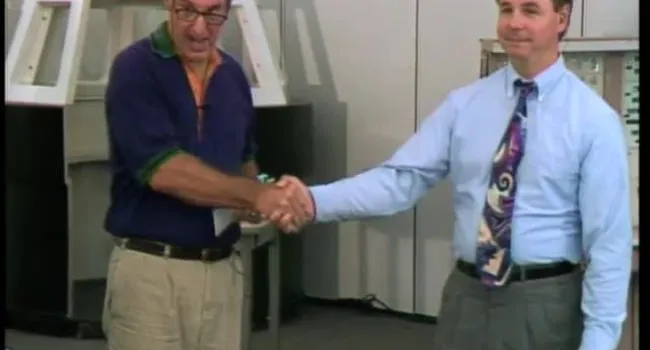In this segment, we meet the engineer who drives one of the two largest track vehicles in the world, the transporter. Built in 1963, the transporter is approximately 120 feet by 115 feet in width, and weighs approximately six million pounds. It works much like a diesel locomotive and has four 1000-kilowatt DC generators, which drive 16 propel motors, and the motors turn the tracks, similar to a tank. Each of the shoes weighs approximately a ton, and there are 57 shoes on each of the belts. There are eight belts. Other main areas of the transporter are the control room and the driver's cab.
We see the gangplank ladder at the main entrance of the transporter. The technology is from the late 1950s and '60s. Inside the control room, we see the control panel, which keeps the mobile launcher platform level, as it is going to the pad and up the slope. The operator remains there monitoring that level throughout. The crawler is capable of lifting about 13 million pounds. When you add in the weight of six million, you have about 20 million pounds rolling down the crawlerway, which is quite a feat. The other areas are monitored by a control room engineer. A lot of the systems are old, but they have put some man-machine interface units, which make it possible to monitor much more information at a much faster rate.
The engine room is comprised of six engines. Two of the engines produce 2,750 horsepower a piece, and each one drives two 1000-kilowatt generators. There are also two AC generators, 750 kilowatt apiece and they provide the AC for the control room and on the crawler. Two other engines provide power to the mobile launch platform while it is en route from the VAB to the pad.
As we've seen, there are many systems that must be monitored. We see the driver's cab. One person controls the steering and the speed of the crawler transporter. We see the steering wheel, the speed control, and an air brake, much like the ones that are on semi trucks. The top speed of the crawler is approximately one mile an hour, but the most interesting function is how slow it can go and in how small an increment, such as one-eighth of an inch, and can also move as slowly as one-one-hundredth of a mile an hour. Although the transporter is operated by one person, it takes 18 people working together to move the shuttle from the VAB to the launch pad, and close to 18 thousand people are needed.to put the vehicle into orbit.
We view the crawler moving the shuttle out of the VAB toward the launch pad at about one mile an hour. It takes about six hours to get it there.






